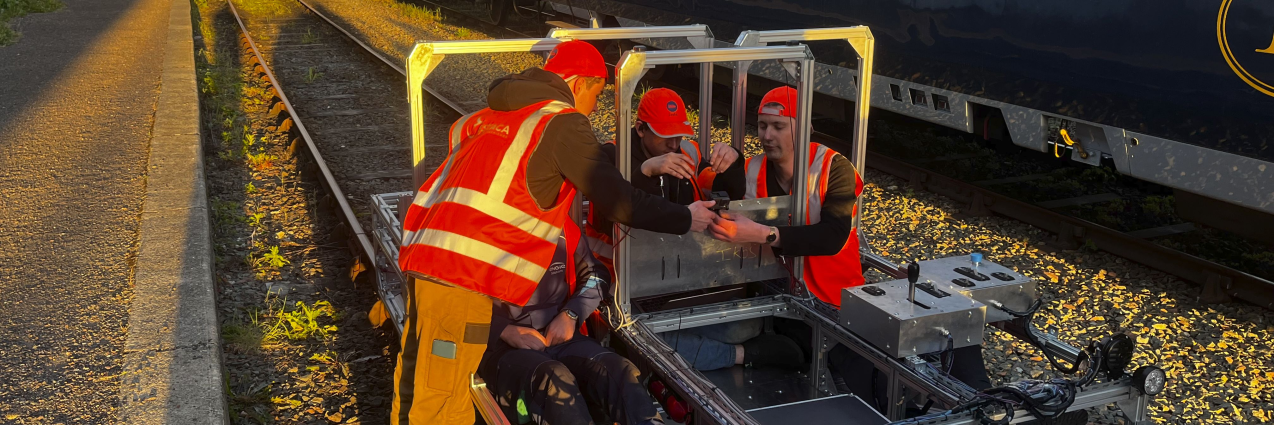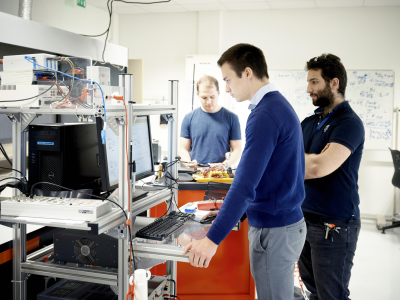News

A 100% electric velorail with energy recovery
From April 15 to 20, 2024, some thirty students from the rail engineering course tested their prototype electric velorail with energy recovery in Charente Maritime on the Mouettes train line. Entirely designed and built as part of the training program, this project applies notions ofaerodynamics, transmission, chassis and steering. All with a view to developing tomorrow's lighter, more durable trains.
Test a vehicle entirely designed and built as part of an academic project
For the past two years, ESTACA students have been carrying out a complete engineering project, as part of their training in the railway sector, around the design of a 100% electric velorail with energy recovery. The aim of this type of project is to design, manufacture and test a rolling vehicle, and to offer manufacturers their own experiments.
This year, 24 students were involved in the project, supervised by Marc Ciais, class of 2003, SNCF engineer and head of ESTACA's rail course. With two chassis and two electric bicycle motors, the vehicle can reach speeds of up to 45 km/h, where conventional velorails are limited to 20 km/h. Compared with last year's model, the chassis has benefited from a number of modifications, making the structure more rigid and passenger seating more secure. The running gear has been optimized, the powertrain has been completely overhauled for greater reliability, and a low-voltage architecture worthy of modern rolling stock has been integrated, providing a driving experience as close as possible to that of today's railcars.
Thanks to a partnership with the Ferrocampus in Saintes, a week's testing of the vehicle designed and manufactured on the ESTACA Paris-Saclay campus was organized with theTrains et Traction association, which operates the Mouettes train line.
A unique educational experience
The railways are attracting increasing interest because of their undeniable advantages in the world of low-carbon mobility. Trains are champions of energy efficiency and simplicity! As the only French school to offer a course specifically dedicated to the rail industry, ESTACA makes it a point of honor to offer its students innovative teaching methods, with concrete projects to apply their knowledge, develop teamwork and learn to develop skills in conditions very close to those of railway engineers.
The Vélorail project is part of this approach. Its objective is of course educational: to work on the entire project process, from the design phase through to the testing phase, in order to experience different facets of the railway engineering profession. But it's also about gaining real-life experience of what it's like to be an engineer, including learning how to deal with the unforeseen events that are an inevitable part of any project. For example, when an axle broke during testing, the students had to work together to find a solution.
Hugo Decloquement, a 5th year student currently doing an internship at Alstom, who worked on the vehicle last year and is continuing to follow the project this year, tells us:
















No comment
Log in to post comment. Log in.